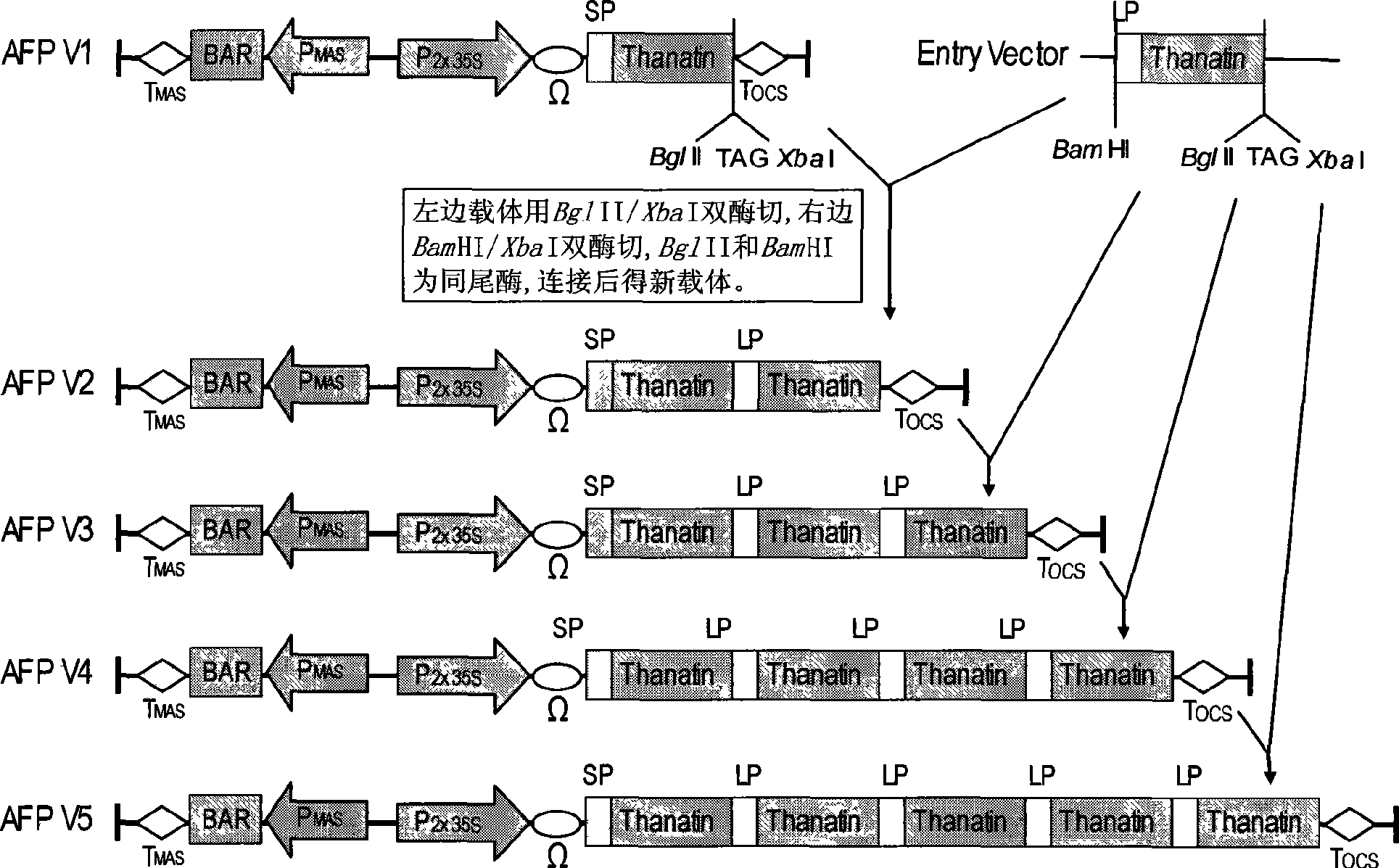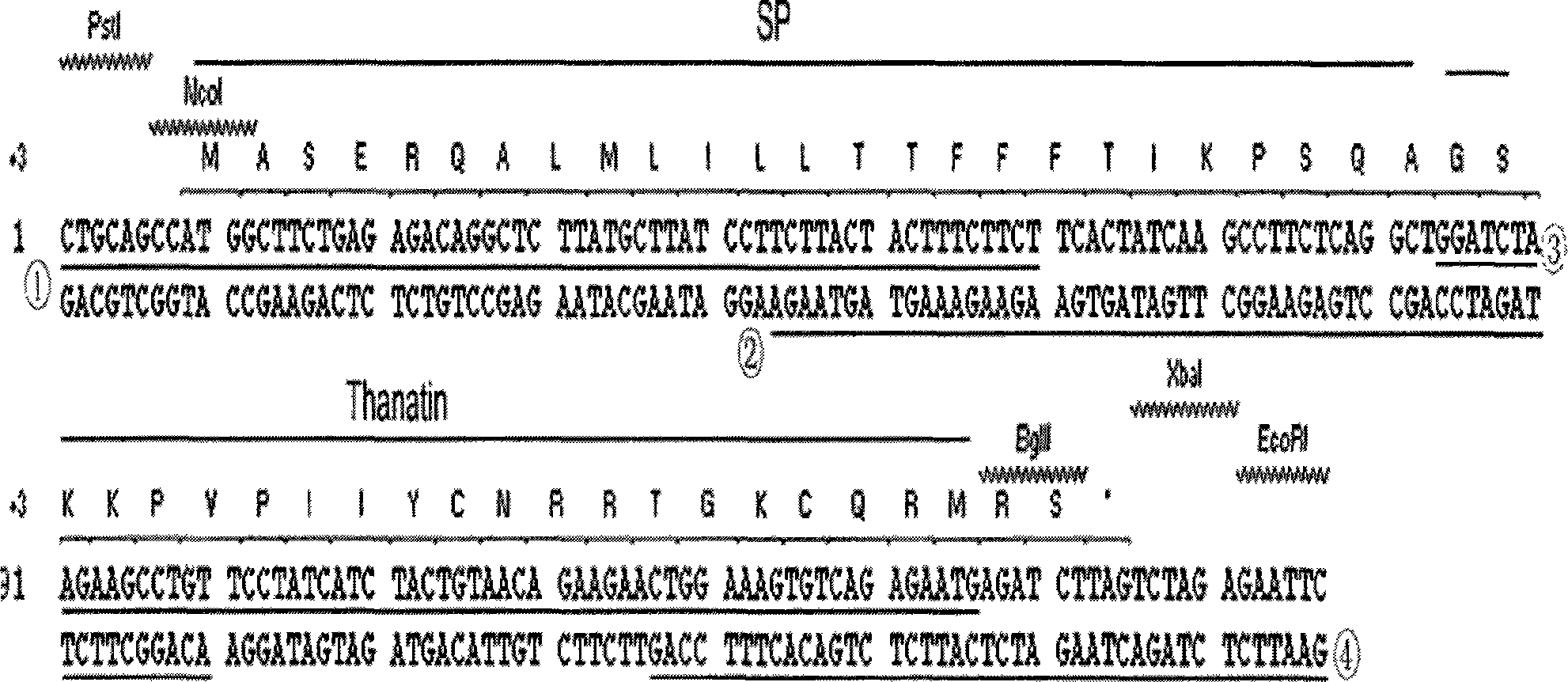Method for increasing abundance and stability of antibacterial peptide expressed inside plant
An antibacterial peptide and stability technology is applied in the field of enhancing the abundance and stability of the expression of antibacterial peptides in plants, and can solve the problems of low expression abundance of heterologous antibacterial peptides and degradation of plant endogenous proteases.
- Summary
- Abstract
- Description
- Claims
- Application Information
AI Technical Summary
Problems solved by technology
Method used
Image
Examples
Embodiment Construction
[0010] Taking the antimicrobial peptide Thanatin as an example, a multi-copy antimicrobial peptide fusion expression vector was constructed.
[0011] Key points of the design: the cleavage site of the antibacterial peptide of Impatiens is used as the spacer sequence, the amino acid sequence and cleavage method are S↓NAADEVATPE↓DVEPG, the signal peptide of soybean chitinase is used as the guide sequence, and the sequence characteristics are MASERQALMLILL TTFF FTIKPSQA , the multi-copy antimicrobial peptide fusion expression product is introduced into the intercellular space and accumulates in high abundance around the cell wall, and then cleaved into a single active antimicrobial peptide unit. The fusion expression study of the soybean chitinase signal peptide and GFP protein shows that the signal peptide can specifically introduce the target protein into the cell space and cell wall.
[0012] Attached figure 1 Design antimicrobial peptide fusion expression vector structure. ...
PUM
 Login to View More
Login to View More Abstract
Description
Claims
Application Information
 Login to View More
Login to View More - R&D
- Intellectual Property
- Life Sciences
- Materials
- Tech Scout
- Unparalleled Data Quality
- Higher Quality Content
- 60% Fewer Hallucinations
Browse by: Latest US Patents, China's latest patents, Technical Efficacy Thesaurus, Application Domain, Technology Topic, Popular Technical Reports.
© 2025 PatSnap. All rights reserved.Legal|Privacy policy|Modern Slavery Act Transparency Statement|Sitemap|About US| Contact US: help@patsnap.com



